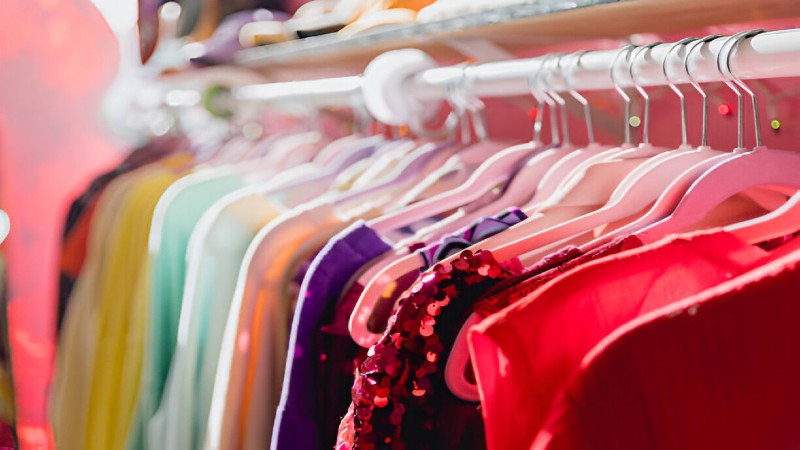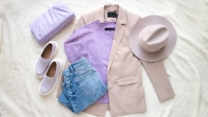
The Science of Color: Dressing to Boost Your Mood
Have you ever found yourself in a style rut, reaching for the same drab, neutral outfit day after day? You’re not alone. In a world full of visual noise, it’s easy to fall back on what’s comfortable and familiar. But what if the secret to feeling more energized, calm, or confident wasn’t in your morning coffee, but hanging right there in your closet?
The answer lies in understanding the psychology behind the hues you wear, you can intentionally curate a wardrobe that acts as a powerful tool for your emotional well-being. This isn’t just about looking good; it’s about feeling good from the inside out.
Why Your Clothes Have a Psychological Superpower
The clothes we wear do more than just cover our bodies. They are a form of non-verbal communication, influencing not only how others perceive us but also how we perceive ourselves. This concept, known as enclothed cognition, suggests that the symbolic meaning of our clothing can be internalized, subtly shaping our mindset and behavior.
The vibrant colors of a shirt, the deep tones of a jacket, or the soft shades of a scarf all carry associations. When we put them on, we begin to embody the emotions and qualities we connect with those colors. For example, a crisp white lab coat makes someone feel more focused and intelligent—but only when they associate it with a doctor, not a painter. This powerful connection is the core of the science of color.
Color Psychology in Your Wardrobe
Beyond the basic rulebook of red for passion and blue for calm, the true power of color lies in its nuance. The psychological impact of a color is not universal; it is deeply personal and cultural. This is where we can find a fresh perspective: it’s not about wearing a specific color for a specific outcome, but about understanding what a color means to you.
For instance, while yellow is universally associated with joy, the true mood boost comes from wearing a color that personally makes you feel like your most authentic self. This is the essence of dopamine dressing—a trend that is less about a chemical release and more about the psychological boost of intentional, joyful dressing.
The Psychology of Your Favorite Colors
Rather than following a rigid color guide, start by asking yourself which colors you are drawn to. Think back to a time when you received a compliment on an outfit. What was its color?
- Red: Universally linked to power and passion. Wear it for a presentation or a job interview when you need to project confidence.
- Yellow: The color of optimism and energy. Perfect for brightening a dull day and radiating warmth.
- Blue: Associated with tranquility and reliability. An ideal choice for calming your nerves before a difficult conversation.
- Green: A symbol of nature, renewal, and balance. Studies have even shown it can spark creativity.
- Black: A complex color that can convey authority and sophistication, but also aggression. Use it strategically to command respect.
Your Personal Mood-Boosting Guide
To make this science practical, we’ve created a simple guide to help you choose your outfit based on the mood you want to evoke.
| If You Want to Feel… | Go-To Colors (for most) | Try This Instead… |
| Energetic & Alert | Red, Orange, Yellow | Wear a bright print that makes you smile. The personal connection to a pattern can be as powerful as a single color. |
| Calm & Confident | Blue, Green, Pastels | Choose a monochromatic outfit in your favorite shade. A head-to-toe look in a single, calming color is deeply grounding. |
| Creative & Inspired | Green, Purple, Orange | Layer unexpected color combinations. Mixing a warm tone (e.g., orange) with a cool one (e.g., purple) can break mental barriers and spark new ideas. |
| Powerful & Respected | Black, Navy Blue, Dark Gray | Wear a favorite color that holds symbolic value for you, such as your alma mater’s color or a hue that reminds you of a moment of triumph. |
Easy Ways to Add Mood-Boosting Colors to Your Wardrobe
Incorporating more color doesn’t require a complete overhaul. The key is to start small and build a collection of joyful pieces.
- Take Baby Steps: Add a single pop of color to a neutral outfit. Think a bright scarf, a vibrant pair of shoes, or statement jewelry.
- Embrace Layering: A colorful sweater or jacket layered over a simple tee can instantly transform your look and your mood.
- Mix & Match: Combine a bright top with neutral bottoms, or vice versa, to find a balance that feels comfortable for you.
- Look to Accessories: A bright bag, a pair of colored sunglasses, or a bold watch can act as a powerful visual cue throughout your day, giving you a little lift every time you see them.
The next time you’re staring at a closet full of clothes, think about how you want to feel. The color you choose can be more than just a style statement—it can be a tool for happiness, a catalyst for confidence, and a way to dress your best life.
Conclusion
In the end, dressing to boost your mood is not a fleeting trend—it’s a form of self-care. By understanding the science of color, you can transform your wardrobe from a collection of clothes into a powerful toolkit for emotional well-being. The next time you get dressed, consider the feeling you want to cultivate and choose a color that helps you get there. It’s a simple act with a profound impact, proving that the brightest moments in your day might just be a vibrant accessory or a colorful top away.
Frequently Asked Questions (FAQs)
How can the concept of enclothed cognition be applied to my daily dressing?
Enclothed cognition suggests that you can wear clothes that carry a symbolic meaning you want to embody. For example, if you want to feel more creative, you could wear a color like green, which is associated with renewal and fresh ideas, to help influence your mindset.
Which colors are best to wear for an important professional meeting?
For a professional meeting, colors like navy blue or gray can convey a sense of reliability and seriousness. If you want to project confidence and authority, a strategic pop of red in an accessory or shirt is often an excellent choice.
Do colors affect my physiological state, such as my heart rate or energy levels?
Yes, some research has shown that seeing certain colors, particularly red and yellow, can lead to increased physiological arousal. This can manifest as a higher heart rate or a feeling of heightened alertness, which can be energizing.
Can wearing all black ever be a good idea for my mood?
While black is often associated with sadness, it also conveys power, authority, and elegance. If you want to project a sense of sophistication and be taken seriously in a professional or social setting, wearing a tailored black outfit can be a powerful choice.
What is the difference between color psychology and chromotherapy?
Color psychology is the study of how colors influence human mood and behavior through observation and research. Chromotherapy, or light therapy, is an alternative and historical practice that uses colors to try and heal physical or emotional conditions.
How do I choose the right colors for my unique skin tone and personal style?
Beyond the general psychological effects, choosing colors that complement your skin tone is crucial for feeling your best. You can determine your seasonal palette (e.g., Winter, Summer, Spring, Autumn) to find the hues that make you shine and feel most confident.
Is it better to wear a full-color outfit or just a pop of color for a mood boost?
Both methods are effective. A full-color outfit can create a powerful, intentional statement and can be deeply grounding. However, even a small pop of color—like a vibrant accessory—can be enough to act as a visual pick-me-up and a reminder of your desired mood.
Do the colors of my clothes influence how others perceive my personality?
Absolutely. Studies have shown that people often make subconscious judgments based on color. For instance, teams wearing black uniforms are often perceived as more aggressive, while individuals in bright, joyful colors are seen as more approachable and friendly.











